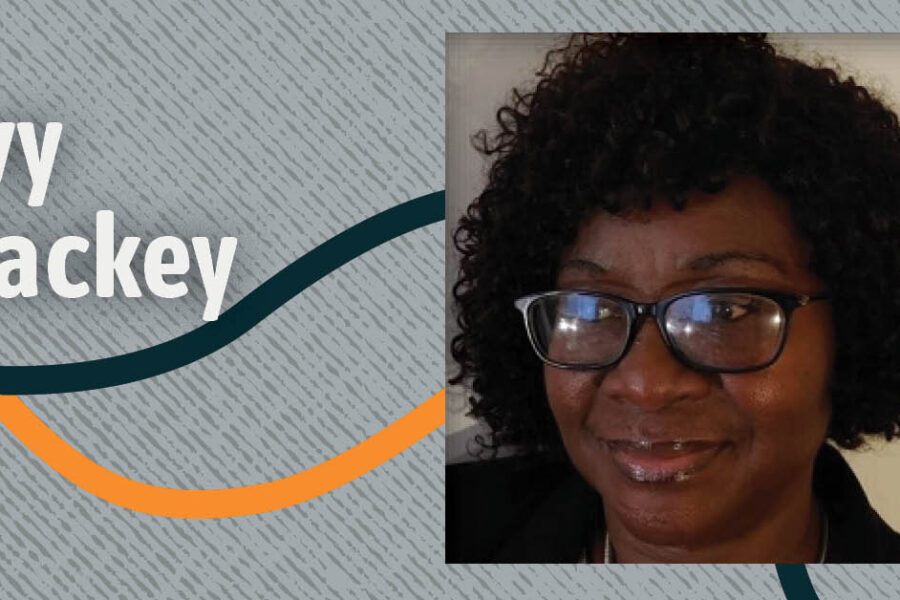“No matter the sector the student is focusing on, whether they’re working in for-profit business, social services, or a nonprofit, the importance of organizational leadership cannot be overstated,” says Dr. Mary Ann Short, Antioch’s Director of Graduate Management Studies programs. That’s why all management students at Antioch have to take one of two courses in “Organizational Leadership” that provide a foundation to their advanced studies.
These courses are deeply interesting and engaging, using a “case study” model combined with readings and discussion. In this article, we explore just what makes “Organizational Leadership and Change” and “Organizational Leadership and Governance” such important parts of a management education.
Putting Leadership at the Forefront
Antioch offers three graduate management degrees, a Master of Business Administration, a Master of Arts in Nonprofit Management, and a Master of Human Services Administration. Each graduate program is distinct, says Short, but they also share common business elements and foundational framework. They all intersect with the same core ideas, including organizational leadership.
However, Antioch offers this subject through two slightly differing courses. The first, “Organizational Leadership and Change,” is geared towards MBA students, while students studying Nonprofit Management or Human Services Administration enroll in “Organizational Leadership and Governance.”
The classes are distinctive in some important ways, says Short, “but both courses share a focus around the importance of organizational leadership.”
A Business Perspective on Organizational Leadership
Antioch’s Dr. Kenneth Baker sees leadership and change as intertwined. Baker, who heads up the Graduate Management Studies MBA program, is the instructor for “Organizational Leadership and Change,” a course specifically designed for MBA students. It’s a subject Baker knows well.
“I’ve taught this class, or classes similar to this one, for probably fifteen years,” Baker says.
Baker has seen a lot of trends in leadership during his time as an MBA professor. Still, he’s found stability in the elements that don’t change. The core principles and concepts are universal pillars, and one of those pillars is organizational leadership. So Baker knows how critical understanding the layers of organizational leadership is for his students.
“There’s personal change, employee change, leadership change, organizational change,” Baker says. “And students need to recognize those levels and have different techniques to deal with them.”
Organizational Leadership and Change is all about communication and discussion, and its asynchronous, online format helps facilitate those invaluable peer-to-peer exchanges.
Baker designed the course as a case-based class—the curriculum centers around two case studies. One of the main elements of change and leadership emphasized is that change isn’t always something we think about.
“Students need to understand that change is an essential part of any industry. And how you go about handling change is critical,” Baker says.
Students dig in and analyze a case study to understand leadership and change. Baker’s class looks at these case studies, which could be anything from Netflix to Uber, and analyzes how these companies dealt with change effectively or ineffectively. How did they make these changes, and in what ways could they have done it better?
“It’s interesting to watch the students’ viewpoints change from day one to week seven. By the end of the course, students recognize cultural aspects of companies that they may not have looked at before and understand how to make changes.”
For Baker, that’s a perspective of leadership that’s reaffirming.
Organizational Leadership From a Nonprofit Perspective
There’s an intersection between students completing degrees in Human Services Administration and Nonprofit Management. While Nonprofit Management encompasses a broad sector of organizations, including organizations from the arts to museums to hospitals, Antioch’s Human Services Administration is more specific to professions rooted in social services. There are similarities in structure and function, which is why students in both the Nonprofit Management and Human Services Administration programs take Antioch’s Organizational Leadership and Governance course together.
For Dr. Short, this core course is foundational for anyone who works in the nonprofit sector. Short states, “the course’s curriculum uses the lens of governance to examine the relational dynamics of organizational leadership.”
“I’ve found that looking at organizational leadership through the lens of governance is a new concept for most people,” Short says. “Even for individuals who currently work in nonprofits, they may know about their board of directors, but they don’t understand the operations of the board and the relationship with executive leadership.”
This case-based course allows students to gain hands-on experience in two ways.
One opportunity revolves around a case study. Short explains, “the case study deals with a dysfunctional board. Students have the chance to analyze a variety of issues and problems based on the principles of good governance and leadership.”
“It’s a group activity,” Short says. “All of the students analyze the same case. Students do their individual analyses, but then through our class discussions, they have the opportunity to share and compare their insights into the case and ultimately recommend strategies for addressing the leadership issues.”
And the second opportunity for hands-on learning is an interview. “Students gain additional perspective of organizational leadership through an interview with a nonprofit executive,” Short adds. “The interview affords for both hands-on learning and networking.” Students choose a topic related to leadership and governance and consult with a leader of an organization.
“Sometimes, students who’ve worked with the board of directors come into this class with a jaded perspective,” Short says. “One of my previous students disclosed that he was skeptical when he started the class. He had some terrible experiences with his organization’s board of directors in the past.”
By the time he had finished the course, Short’s student had left with a renewed outlook on a healthy and productive executive and board of directors’ relationship.
“That’s music to my ears,” Short says.
In the end, the goal of the Organizational Leadership and Governance course is to get both idealists and skeptics to walk away with a robust understanding of the relationships between people in leadership.
It doesn’t hurt, of course, when students leave with a fresh perspective.
A Vision for the Future
Short wants students in Antioch’s Graduate Management Studies programs to leave both organizational leadership classes and understand leadership as a process.
What’s the program’s vision moving forward? Short and her colleagues want to continue Antioch’s long tradition of empowering and preparing students to lead.
That’s why the goal of these courses is all about changing the perspective around the concept of leadership. And it all comes down to that principle of the Triple Bottom Line: people, profit, and the greater good.






